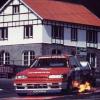Manifold Design and Turbine Housing - expensive lesson learnt
Announcements
-
Latest Posts
-
By Dose Pipe Sutututu · Posted
Lol far from it, just another idiot wasting time and money on this shit box. -
I should change the oil in my Ute, can’t remember the last time I did it. Can promise there won’t be any putting shitty oil in and changing it again though
-
I would rather buy from aliexpress than whatever that "shop" is. Avoid like the plague.
-
Sounds like, to me, if you do some geometry calculations, you can fit a hoist in there
-





Recommended Posts
Create an account or sign in to comment
You need to be a member in order to leave a comment
Create an account
Sign up for a new account in our community. It's easy!
Register a new accountSign in
Already have an account? Sign in here.
Sign In Now